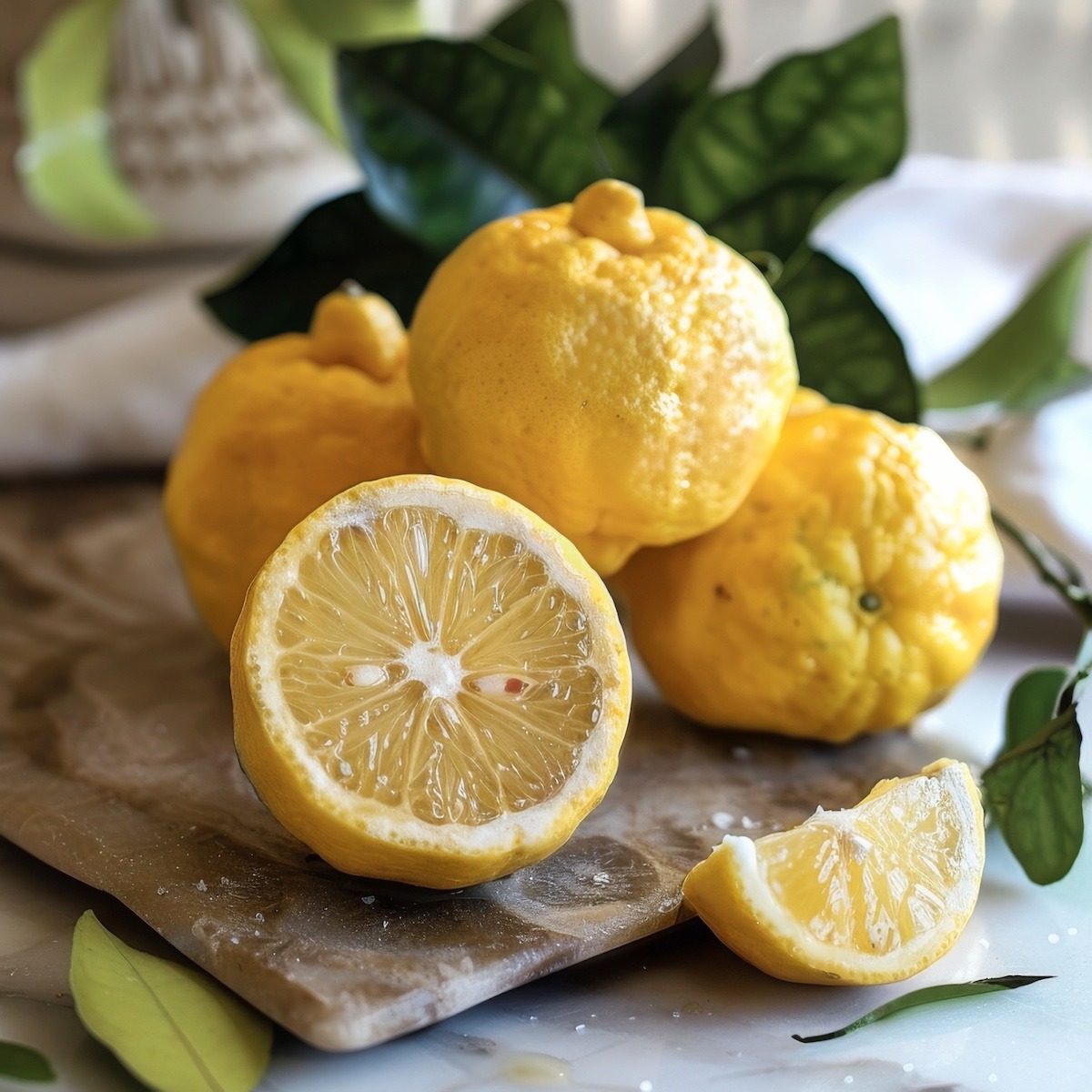What Is Ponzu Sauce and How to Make at Home
Ponzu sauce, a versatile and tangy condiment from Japan, is not just a culinary delight but also a testament to the rich history of Japanese cuisine. Dating back centuries, ponzu has evolved into a staple in Japanese cooking, gaining worldwide popularity for its unique blend of flavors that can enhance a wide range of dishes.
Ponzu sauce is a delicate balance of savory, sour, sweet, and umami flavors, each ingredient playing a crucial role. The citrus fruits, yuzu, sudachi, and kabosu, are the show’s stars, lending their distinctively tart and fragrant notes to the sauce. The result is a light, refreshing liquid with a subtle complexity that elevates the taste of any dish it accompanies.
One of the defining characteristics of ponzu sauce is its versatility. It serves as a fantastic dipping sauce for sushi and sashimi, adding a burst of citrusy brightness that complements the delicate flavors of raw fish. Additionally, ponzu is often used as a marinade for meats and seafood, infusing them with savory-sweet tanginess before grilling or broiling. The acidity of the citrus helps tenderize the proteins while imparting a delightful depth of flavor.
Beyond its role as a dipping sauce and marinade, ponzu shines as a dressing for salads and noodle dishes. When drizzled over a simple green salad or cold noodles, it imparts a zesty kick that enlivens the entire dish. Ponzu can even be incorporated into dressings for cooked vegetables or used as a finishing sauce for grilled vegetables, adding complexity and brightness to every bite.
In recent years, ponzu sauce has inspired chefs worldwide to experiment with its flavor profile, resulting in innovative variations and fusion dishes. Some chefs infuse ponzu with additional ingredients like ginger, garlic, or chili peppers to create new layers of complexity. Others blend it with mayonnaise or olive oil to craft creamy yet tangy sauces that pair beautifully with various foods.
Moreover, ponzu sauce is a flavorful addition to your dishes and a healthy one. It is naturally low in calories and fat, making it a healthier alternative to heavier sauces and dressings. The citrus fruits used in ponzu are also rich in vitamin C and antioxidants, known for their immune-boosting properties, adding to the health benefits of this versatile sauce.
History of Ponzu Sauce

The history of ponzu sauce dates back centuries in Japan, where it has evolved into a beloved condiment integral to Japanese cuisine. The exact origins of ponzu are somewhat unclear, but it is believed to have originated in the Kansai region of Japan during the Edo period (17th to 19th centuries).
Ponzu sauce likely emerged as a variation of traditional soy sauce-based condiments, incorporating the tartness of citrus fruits to create a uniquely tangy flavor profile. The word “ponzu” is thought to be derived from the Dutch word “pons,” meaning punch or sauce, which was introduced to Japan during Dutch trading in the 17th century.
Originally, ponzu sauce was made by combining soy sauce with the juice of local citrus fruits, such as yuzu, sudachi, or kabosu. These citrus fruits not only added a refreshing acidity to the sauce but also helped to balance the saltiness of the soy sauce. Over time, other ingredients, such as mirin (sweet rice wine) and dashi (Japanese fish stock), were incorporated to further enhance the depth of flavor.
Ponzu sauce gained popularity in Japanese cuisine as a versatile condiment that could be used in various ways. It was commonly used as a dipping sauce for sashimi (sliced raw fish), grilled meats, and as a dressing for salads and noodle dishes. The tangy and savory flavor of ponzu complemented a wide range of ingredients and helped elevate the overall dining experience.
In the modern era, ponzu sauce has become widely available in supermarkets and is also used by chefs worldwide to add a touch of Japanese flavor to their dishes. While the basic recipe for ponzu remains relatively consistent, there are now many variations and interpretations, with some chefs incorporating additional ingredients such as ginger, garlic, or chili peppers to create unique flavor profiles.
Umami
Umami, often called the fifth taste, is a savory and profoundly satisfying flavor in foods like meat, cheese, mushrooms, and soy sauce. It enhances taste by stimulating the taste buds, adding complexity and depth to dishes.
Japanese scientist Kikunae Ikeda discovered that umami is characterized by its rich, mouthwatering sensation, distinct from sweet, sour, salty, or bitter tastes. Commonly associated with glutamate, an amino acid, umami is celebrated for its ability to round out flavors and create a sense of fullness. It’s an essential component of culinary artistry, elevating dishes to new levels of deliciousness.
What is Yuzu?

Yuzu is a citrus fruit native to East Asia, particularly Japan, China, and Korea. It resembles a small grapefruit but has a unique flavor profile that differentiates it from other citrus fruits. The yuzu fruit is prized for its aromatic zest and tart juice, making it a beloved ingredient in Japanese cuisine for centuries.
The flavor of yuzu is bright, tangy, and intensely aromatic, with notes of lemon, mandarin, and grapefruit. Its zest is often used to add a fragrant, citrusy kick to dishes, while its juice lends a refreshing acidity that enhances the taste of both sweet and savory recipes.
Yuzu is used in various forms in Japanese cooking. The zest is commonly grated and added to sauces, dressings, marinades, and desserts to impart its distinctive aroma and flavor. The juice also makes ponzu sauce, a versatile condiment for dipping, marinading, and seasoning various dishes.
Beyond its culinary uses, yuzu is also valued for its health benefits. It is rich in vitamin C and antioxidants, known for their immune-boosting properties. Additionally, the aromatic compounds found in yuzu zest are believed to have mood-lifting effects, making it a popular ingredient in aromatherapy and skincare products.
Due to its limited availability outside of East Asia and its complex flavor profile, yuzu has gained popularity among chefs and food enthusiasts worldwide. While fresh yuzu fruit may be difficult to find in some regions, yuzu juice, zest, and products made with yuzu extract are becoming increasingly available in specialty stores and online markets, allowing more people to experience the unique taste of this prized citrus fruit.
Substitutes for Yuzu
In the United States, if you’re unable to find yuzu, there are several substitutes that you can use to approximate its flavor profile in your recipes:
- Combination of Lemon and Lime: A mixture of lemon and lime juice can replicate some of yuzu’s tartness and citrusy flavor. Start with equal parts lemon and lime juice and adjust the proportions to taste.
- Meyer Lemon: While not the same, Meyer lemons have a sweeter and less acidic flavor than regular lemons, with subtle floral notes. They can provide a similar citrusy brightness to dishes that call for yuzu.
- Grapefruit: Pink or yellow grapefruit can offer a tangy, citrusy flavor reminiscent of yuzu. However, grapefruit tends to be sweeter and less aromatic, so you may need to adjust the sweetness and add additional zest or aromatic citrus juice to compensate.
- Combination of Orange and Grapefruit: Mixing orange and grapefruit juice can create a flavor profile similar to yuzu’s. The sweetness of the orange balances the tartness of the grapefruit, resulting in a citrusy blend that can work well in various recipes.
- Lemon and Mandarin Orange: Combining lemon juice with the juice of mandarin oranges (such as clementines or tangerines) can balance tartness and sweetness similar to yuzu. This combination can work particularly well in dressings, sauces, and marinades.
While these substitutes may not perfectly replicate the unique flavor of yuzu, they can offer a similar citrusy brightness to your dishes. Experiment with different combinations and proportions to find your recipe’s closest match to yuzu. Additionally, you can often find bottled yuzu juice or yuzu-flavored products in specialty grocery stores or online retailers, providing a more authentic yuzu flavor if available.
Ponzu Sauce Recipe
Ingredients
- ½ cup soy sauce
- ¼ cup citrus juice freshly squeezed (you can use a combination of yuzu, lemon, lime, or orange)
- 2 tablespoons mirin Japanese rice vinegar
- 1 tablespoon dashi optional
- 1 tablespoon ginger grated or minced
- 1 tablespoon sugar for extra sweetness
Instructions
- In a small saucepan, combine the soy sauce, citrus juice, mirin, rice vinegar, and dashi (if using). Place over medium heat and bring to a gentle simmer.
- Add the grated or minced ginger and sugar (if using) to the saucepan, stirring until the sugar has dissolved.
- Let the mixture simmer for 5-10 minutes, allowing the flavors to meld together. Keep an eye on it and stir occasionally to prevent burning.
- Once the sauce has thickened slightly and the flavors have developed to your liking, remove it from the heat and let it cool to room temperature.
- Once cooled, strain the ponzu sauce through a fine-mesh sieve to remove any ginger fibers or other solids.
- Transfer the strained sauce to a clean bottle or jar with a tight-fitting lid. Store it in the refrigerator for up to a few weeks.
- Use your homemade ponzu sauce as a dipping sauce for sushi and sashimi, a marinade for meats and seafood, a dressing for salads and noodle dishes, or as a flavor enhancer for various recipes.
















